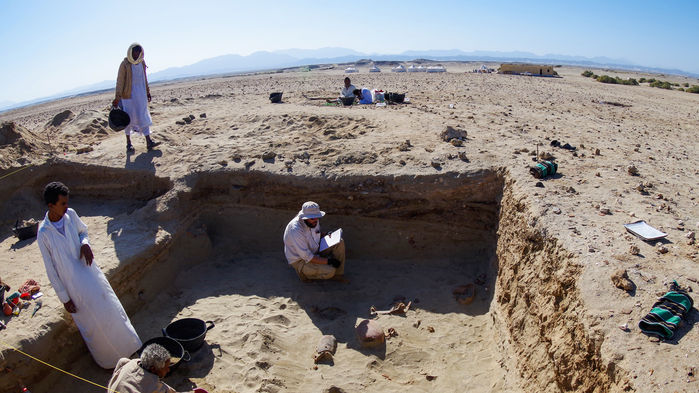10 years ago, experts found a site located in the early Roman port of Berenice that has several skeletons of cats and dogs in individual graves. Many of them wore collars, others adornments. The animals were surely taken cared for through injury and old age, and it was pretty clear that the last animal companion buried on the coast of the Red Sea was nearly 2,000 years ago.
Now, a new detailed excavation has unearthed burials of nearly 600 cats and dogs, along with the evidence that the animals were treasured beloved animal companions. The authors of the study argue that the site may be the oldest known pet cemetery in the world.

“I’ve never encountered a cemetery like this,” Michael MacKinnon, a zooarchaeologist at the University of Winnipeg, told Science Magazine. “The idea of pets as part of the family is hard to get at in antiquity, but I think they were [family] here.”
Marta Osypinska, an arhaceozoologist from the Polish Academy of Sciences, discovered the graveyard beneath a Roman trash dump in 2011. Then in 2017, her team reported unearthing the remains of about 100 animals – mostly cats – which appeared to have been cared for.
Osypinska and her colleagues have now excavated 585 animal remains from the site and analyzed the bones in details. According to the report, the animals appear to have been laid gently in well-prepared pits. Most of them were covered with textiles, “which formed a kind of sarcophagus.” They added that more than 90% were cats, most of whom were wearing iron collars or necklaces threaded with glass and shells.

The dogs make up about 5% of the burials (the rest are monkeys), and appeared to be older when they died.
“We have individuals who have very limited mobility,” Osypinska said. “Such animals had to be fed to survive, [sometims] with special foods in the case of the almost-toothless animals.”
From what they gathered, the team found that the humans took such good care of the animals, much like how many modern owners do. This suggested that the people of Berenice had a strong emotional bond with their cats and dogs.
“They weren’t doing it for the gods or for any utilitarian benefit,” Osypinska said.
You might want to read:
– Dog’s new mission: Help archaeologists uncover ancient remains
– A push for koalas in the bush: Protecting a vulnerable Australian species before it’s too late
– Of dogs, cats, bats, men and coronaviruses






